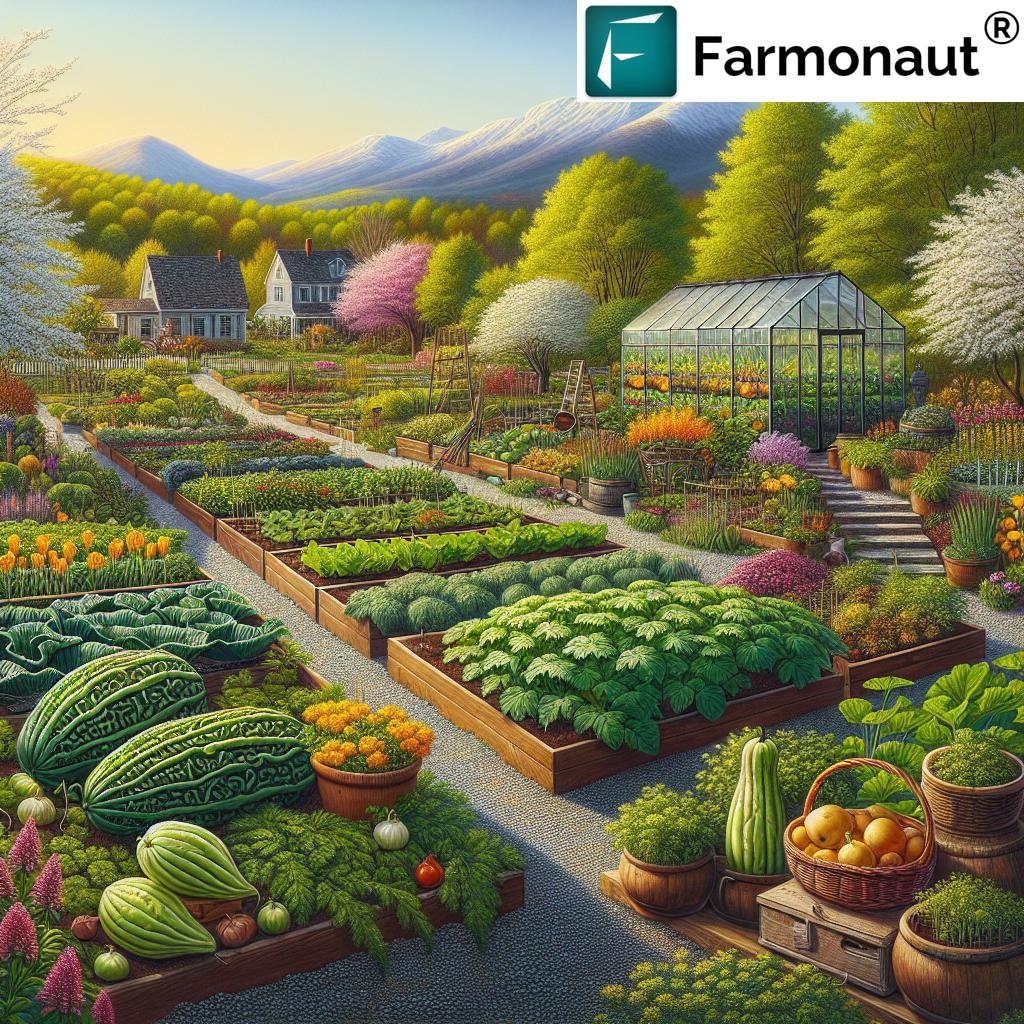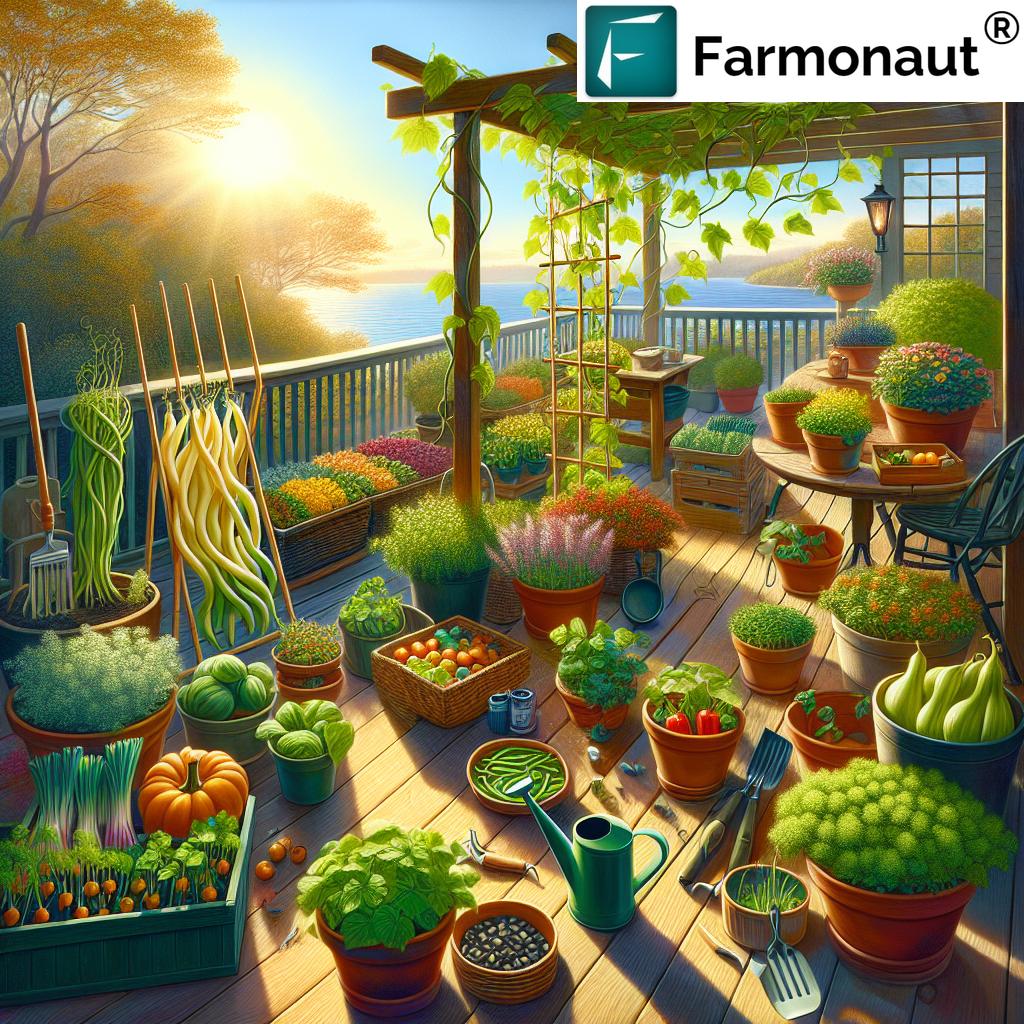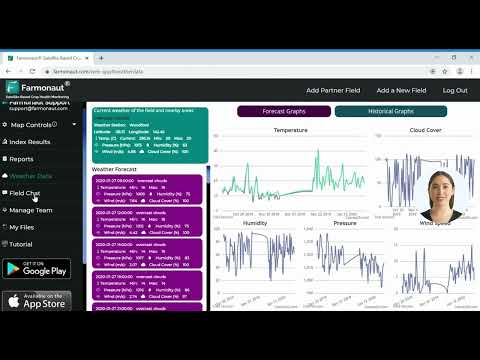Growing Indian Vegetables in New England: A Beginner’s Guide to Spring Gardening
“New England gardeners can successfully grow over 10 types of Indian vegetables, including karela and lauki.”
As the gentle warmth of spring begins to embrace New England, we find ourselves at the perfect moment to embark on an exciting gardening journey. For those of us with Indian or South Asian heritage living in this beautiful region, there’s a unique opportunity to bring a taste of home to our backyards. In this comprehensive guide, we’ll explore the joys and intricacies of Indian vegetable gardening in New England, providing valuable insights for both beginners and seasoned green thumbs alike.
The Rising Popularity of Gardening in the United States
Before we dive into the specifics of growing Indian vegetables, let’s take a moment to appreciate the growing trend of gardening in the United States. Since the onset of the pandemic, gardening has surged in popularity, with a significant percentage of American households now participating in gardening activities. Market data reveals that approximately 55% of U.S. households have a garden, translating to around 71.5 million gardening households. In fact, the United States ranks among the top three gardening nations globally.
This trend isn’t just about producing fresh vegetables or beautiful flowers; gardening offers a host of benefits for both mental and physical health. It provides stress relief, a deeper connection to nature, and a sense of accomplishment as we nurture plants from seed to harvest. If you haven’t yet embraced gardening, now is the perfect time to start your journey.
Preparing Your Garden in Late March and Early April
As we approach the gardening season in New England, it’s crucial to focus on the basics of garden preparation. Late March and early April present an excellent opportunity to clean up your garden space and remove any lingering weeds. Early action in weed control is vital – if left unchecked, weeds can quickly develop strong roots, making them much more challenging to remove later in the season. Moreover, weeds allowed to flourish will flower and spread seeds, exacerbating the problem. By tackling this task early, you’ll set the stage for a cleaner, more manageable garden throughout the growing season.
This is also an ideal time to turn and loosen the soil in your garden. This process allows air to circulate, promoting healthier root growth for your future plants. Adding compost at this stage can significantly enrich the soil, providing essential nutrients that will give your plants a robust start when it’s time to plant.

Determining the Best Time to Plant
While the urge to start planting might be strong, patience is key to successful gardening in New England. It’s crucial to wait until nighttime temperatures consistently hover around 50°F (10°C). The nighttime temperature plays a vital role in plant health – planting too early, when nighttime temperatures frequently drop below 50°F, can stress your plants. Although they may survive, they won’t grow vigorously, potentially resulting in fewer, smaller fruits and increased susceptibility to diseases.
In Boston, for instance, nighttime temperatures typically reach the 50s starting around early to mid-May, making this an excellent time to begin planting. For optimal results, aim to have all your plants in the ground by Memorial Day weekend (May 26, 2025).
Indian Vegetables That Thrive in New England
New England’s climate is surprisingly conducive to growing a variety of vegetables, including many Indian favorites. Here’s a closer look at some Indian vegetables that can thrive in your New England garden:
1. Karela (Bitter Melon)
Karela, also known as Bitter Melon, is one of the easiest Indian vegetables to grow in New England. This climbing vine thrives in full sun and, once established, will produce fruits throughout the summer and into early fall. Karela requires plenty of space to grow, ideally along a fence or trellis. It’s also notably resistant to deer and other garden pests, making it a low-maintenance option for your garden. When selecting karela plants, opt for the Indian variety, as it offers a more authentic flavor compared to the softer, milder Chinese variety.
2. Lauki (Indian Long Gourd)
Lauki, also called Bottle Gourd, is another vegetable that grows exceptionally well in New England. A single lauki plant can produce enough to feed your entire family throughout the summer and into early fall. Like karela, lauki is a creeper that requires space to spread out, preferably climbing on fences or trellises. It thrives in warm, sunny conditions and rich, well-drained soil. With proper care, lauki can be a prolific producer in your garden.
3. Dhania (Cilantro)
Fresh cilantro, or dhania, is a staple in Indian cuisine and can be easily grown in your New England garden. You can start cilantro from seeds readily available in your kitchen – simply soak the seeds overnight and plant them the following morning for best results. While seedlings are available at garden centers, growing cilantro from seed often yields the freshest leaves. Keep in mind that cilantro tends to bolt quickly in warm weather, so regular trimming of flowers is essential to encourage leafy growth.
4. Mustard and Methi (Fenugreek)
Both mustard greens and methi (fenugreek) are easy to grow from seeds you likely already have in your kitchen spice rack. These plants thrive in cooler weather and can be harvested for their leaves in early summer. Simply sow the seeds directly into the soil for a quick and bountiful harvest. These leafy greens add a distinctive flavor to many Indian dishes and are packed with nutrients.
In addition to these specific Indian vegetables, you can also successfully grow spinach, radishes, corn, peas, chard, and kale from seed in your New England garden. These versatile vegetables are excellent options for starting your garden early in the season and can complement your Indian vegetable selections beautifully.
Container Gardening: A Solution for Limited Space
For those with limited outdoor space or who are just starting their gardening journey, container gardening offers an excellent solution. Many Indian vegetables, including herbs like cilantro and fenugreek, adapt well to container growing. Here are some tips for successful container gardening:
- Choose containers with good drainage to prevent waterlogging.
- Use high-quality potting soil specifically formulated for containers.
- Select compact varieties of vegetables that are suited for container growth.
- Place containers in areas that receive adequate sunlight (at least 6 hours daily for most vegetables).
- Water consistently, as containers tend to dry out faster than in-ground gardens.
Container gardening allows you to enjoy fresh, homegrown Indian vegetables even if you have a small balcony, patio, or limited yard space. It’s also an excellent way to experiment with different plants before committing to a larger garden plot.
Soil Preparation and Fertilization
Proper soil preparation is crucial for the success of your Indian vegetable garden in New England. Most Indian vegetables thrive in well-draining, nutrient-rich soil. Here’s how to prepare your soil for optimal growth:
- Test your soil pH and nutrient levels. Most vegetables prefer a slightly acidic to neutral pH (6.0-7.0).
- Amend your soil with organic matter such as compost or well-rotted manure to improve fertility and structure.
- If your soil is heavy clay, consider adding sand or perlite to improve drainage.
- For container gardens, use a high-quality potting mix designed for vegetables.
When it comes to fertilization, many Indian vegetables are heavy feeders and benefit from regular nutrient supplementation. A balanced, organic fertilizer applied according to package instructions can help ensure your plants receive the nutrients they need throughout the growing season.
Watering and Irrigation Techniques
Consistent watering is essential for the health and productivity of your Indian vegetable garden. While New England typically receives adequate rainfall, there may be periods of drought during the growing season. Here are some watering tips:
- Water deeply and less frequently to encourage deep root growth.
- Use mulch around your plants to retain moisture and suppress weeds.
- Consider installing a drip irrigation system for efficient water use.
- Water early in the morning to reduce evaporation and fungal growth.
Remember, different vegetables have varying water requirements. For example, lauki and karela generally need more water than drought-tolerant herbs like fenugreek.

Pest Management in Your Indian Vegetable Garden
While many Indian vegetables are naturally resistant to pests, it’s still important to be vigilant about pest management in your New England garden. Here are some eco-friendly pest control strategies:
- Encourage beneficial insects like ladybugs and praying mantises by planting flowers they’re attracted to.
- Use row covers to protect young plants from insect damage.
- Practice crop rotation to disrupt pest life cycles.
- Remove diseased plants promptly to prevent the spread of pathogens.
- Consider companion planting – for example, planting marigolds near your vegetables can deter many pests.
For severe pest issues, consider using organic pesticides as a last resort. Always follow the instructions carefully and apply in the evening to minimize impact on beneficial insects.
Harvesting and Storing Your Indian Vegetables
The joy of gardening culminates in the harvest. Here are some tips for harvesting and storing your Indian vegetables:
- Harvest vegetables when they’re at their peak for best flavor and nutrition.
- For leafy greens like methi and spinach, harvest outer leaves first to allow the plant to continue producing.
- Karela should be harvested when they’re still green and firm.
- Lauki is best harvested when young and tender, about 6-8 inches long.
- Store most vegetables in the refrigerator, but keep tomatoes and eggplants at room temperature.
Proper harvesting and storage techniques will ensure you can enjoy the fruits of your labor for an extended period.
The Mental Health Benefits of Gardening
Beyond the joy of growing your own food, gardening offers numerous mental health benefits. As you tend to your Indian vegetable garden in New England, you may experience:
- Reduced stress and anxiety
- Improved mood and self-esteem
- Enhanced mindfulness and connection to nature
- Increased physical activity and exposure to vitamin D
- A sense of accomplishment and purpose
Gardening can be a form of therapy, providing a peaceful retreat from the demands of daily life. It’s an opportunity to slow down, connect with the earth, and nurture something beautiful and nourishing.
Leveraging Technology in Your Garden
While gardening is an age-old practice, modern technology can enhance your gardening experience and improve your results. One such innovative tool is Farmonaut, a pioneering agricultural technology company that offers advanced, satellite-based farm management solutions. While primarily designed for larger-scale farming, many of Farmonaut’s principles and technologies can be applied to home gardening as well.
Farmonaut’s platform provides valuable services such as real-time crop health monitoring, AI-based advisory systems, and resource management tools. For home gardeners, this translates to more informed decision-making about watering, fertilization, and pest management. By leveraging technology, you can optimize your garden’s health and productivity, ensuring a bountiful harvest of Indian vegetables.
To explore how Farmonaut can enhance your gardening experience, visit their website or download their mobile app:
Indian Vegetables Planting Guide for New England
| Vegetable Name | Planting Time | Growing Season | Special Care Tips |
|---|---|---|---|
| Karela (Bitter Melon) | Late May to early June | Summer to early Fall | Provide support for climbing, regular pruning |
| Lauki (Bottle Gourd) | Late May to early June | Summer to early Fall | Ample space for spreading, consistent watering |
| Bhindi (Okra) | Late May to early June | Summer | Warm soil, frequent harvesting |
| Baingan (Eggplant) | Late May to early June | Summer to early Fall | Rich soil, staking for support |
| Methi (Fenugreek) | Early Spring or Late Summer | Spring or Fall | Well-drained soil, regular trimming |
| Palak (Spinach) | Early Spring or Late Summer | Spring or Fall | Cool weather, consistent moisture |
| Dhaniya (Cilantro) | Early Spring or Late Summer | Spring or Fall | Partial shade in summer, frequent harvesting |
“Early spring preparation for Indian vegetable gardens in New England typically begins 4-6 weeks before the last frost date.”
Connecting with Your Heritage Through Gardening
Growing Indian vegetables in your New England garden is more than just a hobby – it’s a way to connect with your cultural heritage. As you nurture these plants, you’re not only growing food but also cultivating a piece of home. The process of planting, tending, and harvesting these familiar vegetables can evoke memories of family traditions and ancestral practices.
Moreover, sharing the bounty of your garden with friends and neighbors can be a wonderful way to introduce others to the diverse flavors of Indian cuisine. It’s an opportunity to build community and foster cultural exchange, all through the universal language of food.
Frequently Asked Questions
1. Can I really grow Indian vegetables in New England’s climate?
Yes, many Indian vegetables can thrive in New England with proper care and timing. Vegetables like karela, lauki, bhindi, and various leafy greens adapt well to the region’s climate.
2. When is the best time to start my Indian vegetable garden in New England?
The best time to plant most Indian vegetables in New England is late May to early June, after the risk of frost has passed and nighttime temperatures consistently stay above 50°F (10°C).
3. How can I protect my Indian vegetables from New England’s pests?
Use natural pest control methods like companion planting, encouraging beneficial insects, and using row covers. For severe infestations, consider organic pesticides as a last resort.
4. What are some easy Indian vegetables for beginners to grow in New England?
Cilantro, fenugreek, spinach, and okra are relatively easy for beginners. As you gain experience, you can try more challenging vegetables like karela and lauki.
5. How can I extend my growing season for Indian vegetables in New England?
Use techniques like cold frames, row covers, or even a small greenhouse to protect plants from early and late season frosts. Start seeds indoors to get a head start on the growing season.
Conclusion: Embracing the Joy of Indian Vegetable Gardening in New England
As we’ve explored in this guide, growing Indian vegetables in New England is not only possible but can be a rewarding and enriching experience. From the early spring preparations to the bountiful summer harvests, each step of the gardening process offers opportunities for learning, growth, and connection to nature and culture.
Whether you’re a seasoned gardener looking to diversify your crops or a beginner eager to try your hand at growing familiar flavors from home, the New England climate offers a surprising range of possibilities for Indian vegetable gardening. With the right knowledge, preparation, and care, you can create a thriving garden that brings a taste of India to your New England backyard.
Remember, gardening is as much about the journey as it is about the destination. Each season brings new challenges and rewards, and there’s always something new to learn. So don’t be afraid to experiment, ask questions, and most importantly, enjoy the process of nurturing your own little piece of India in New England.
Happy gardening, and may your harvests be bountiful!
Earn With Farmonaut
Earn 20% recurring commission with Farmonaut’s affiliate program by sharing your promo code and helping farmers save 10%. Onboard 10 Elite farmers monthly to earn a minimum of $148,000 annually—start now and grow your income!
For more information about this exciting opportunity, check out this video:
Interested in joining? Visit Farmonaut’s Affiliate Program for more details.
Farmonaut Subscriptions
We hope this guide has inspired you to start your own Indian vegetable garden in New England. Remember, every garden is unique, and part of the joy is in discovering what works best for you. Don’t be afraid to experiment, learn from both successes and failures, and most importantly, enjoy the process of connecting with nature and your cultural heritage through gardening.
For more gardening tips, technology insights, and support for your agricultural endeavors, don’t forget to explore Farmonaut’s range of services and tools. Happy gardening, and may your harvests be bountiful!







